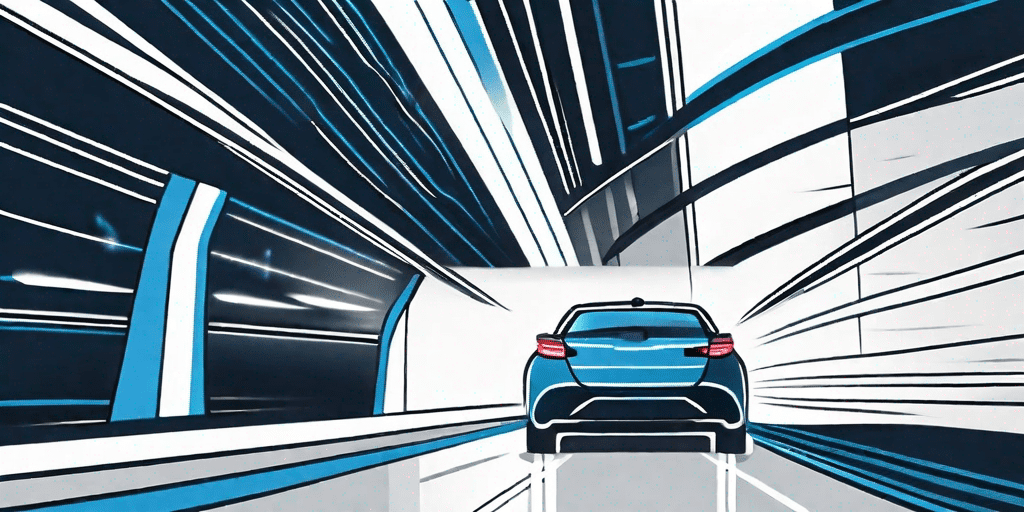Automotive technology has come a long way in recent years, and one area that has seen significant advancements is Advanced Driver Assistance Systems (ADAS). These systems rely on various sensors and cameras to enhance vehicle safety and improve the overall driving experience. Among these sensors, ADAS cameras play a crucial role in capturing essential information about the vehicle’s surroundings.
Understanding ADAS Camera Calibration
ADAS camera calibration is a critical process that ensures the accuracy and reliability of these cameras. Calibration involves aligning the camera angles and parameters to meet the manufacturer’s specifications. The goal is to ensure that the captured data is precise and the system functions optimally.
The Importance of ADAS Calibration
ADAS calibration is essential for several reasons. Firstly, accurate calibration is necessary for the proper functioning of ADAS features such as lane departure warning, automatic emergency braking, and adaptive cruise control. If the camera angles are not aligned correctly, these features may not work as intended, jeopardizing the safety of the driver and other road users.
Secondly, precise calibration is crucial for obtaining reliable data for post-incident analysis. In the event of an accident, the captured footage from ADAS cameras can provide valuable insights into the sequence of events and help determine liability.
Moreover, ADAS camera calibration plays a vital role in enhancing the overall driving experience. When the camera angles are correctly aligned, the system can accurately detect and interpret road signs, traffic lights, and other objects, providing the driver with timely and relevant information.
The Science Behind ADAS Calibration
ADAS camera calibration is a meticulous process that involves both technical expertise and sophisticated equipment. It starts with ensuring that the vehicle is on a level surface and properly secured. Various targets, such as calibration panels, are then placed in specific positions around the vehicle.
These calibration panels are designed with precise markings and patterns that aid in the alignment process. They provide reference points for the camera system to calibrate its angles and parameters accurately. The panels are strategically positioned to cover different areas around the vehicle, ensuring comprehensive calibration.
The next step is to use specialized software that communicates with the camera system to adjust parameters such as focal length, zoom, and rotation. By comparing the camera’s output to the expected outcomes, technicians can determine any deviations and make the necessary adjustments.
During the calibration process, technicians also take into account external factors that may affect camera performance, such as temperature and lighting conditions. These factors can impact the accuracy of the camera’s readings, and therefore, they need to be considered and compensated for during calibration.
Furthermore, ADAS camera calibration is an ongoing process. As vehicles age and components wear out, recalibration may be required to maintain optimal performance. Regular maintenance and calibration ensure that the ADAS system continues to function accurately and reliably, providing the driver with the intended safety benefits.
The Calibration Process
ADAS camera calibration involves a series of steps to ensure a thorough and accurate calibration. Let’s take a closer look at the key stages involved:
Pre-Calibration Preparations
Before initiating the calibration process, it is vital to review the manufacturer’s guidelines and requirements. Technicians need to understand the specific calibration targets, equipment, and software necessary for a successful calibration. Additionally, they should ensure that the vehicle’s ADAS system is up to date and free from any faults or issues that could affect the calibration process.
Steps in ADAS Camera Calibration
The actual calibration process begins with setting up the necessary calibration targets around the vehicle. These targets help align the camera angles and parameters accurately. Technicians then connect the diagnostic software to the vehicle’s ADAS system and initiate the calibration process.
During calibration, the software guides the technician through a series of steps that involve adjusting various camera parameters. Technicians carefully monitor the camera’s output and ensure it meets the manufacturer’s specifications. Once the calibration process is complete, technicians conduct a final verification test to ensure all ADAS features are working correctly.
Common Challenges in ADAS Calibration
While ADAS camera calibration is a critical process, it is not without its challenges. Technicians often encounter various difficulties during calibration, which can affect the accuracy of the calibration process and the overall functionality of the ADAS system.
Dealing with Calibration Errors
Calibration errors can occur due to a variety of factors, such as incorrect target placement, environmental conditions, or software malfunctions. Technicians need to have a keen eye for detail and troubleshoot any issues that arise during the calibration process. Regular training and access to updated technical information are crucial in overcoming these calibration errors.
Overcoming Calibration Difficulties
Some vehicles, especially those with complex ADAS systems, may pose additional challenges during calibration. Advanced features like surround-view cameras or radar-based systems require more comprehensive calibration processes. Technicians must stay updated with the latest calibration techniques and have access to specialized equipment to overcome these difficulties effectively.
The Role of ADAS in Vehicle Safety
ADAS systems have revolutionized vehicle safety by providing additional layers of protection and assistance to drivers. With features like forward collision warning and blind-spot detection, ADAS helps minimize the risk of accidents and improve the overall driving experience.
ADAS and Accident Prevention
One of the most significant benefits of ADAS is its potential to prevent accidents. By constantly monitoring the vehicle’s surroundings, ADAS systems can detect potential hazards and provide timely warnings to the driver. This early warning can be crucial in avoiding collisions and saving lives.
Enhancing Driver Assistance with ADAS
ADAS systems not only prevent accidents but also enhance driver assistance. Features like adaptive cruise control adjust the vehicle’s speed to maintain a safe distance from the vehicle ahead, reducing driver fatigue and stress. Lane-keeping assist helps drivers stay within their lanes, minimizing the risk of drifting into oncoming traffic or off the road.
Future Trends in ADAS Calibration
The field of ADAS calibration continues to evolve, driven by advancements in technology and a growing focus on vehicle safety. Here are some future trends to watch out for:
Technological Advancements in ADAS Calibration
As ADAS systems become more sophisticated, calibration processes will also see advancements. Machine learning algorithms and artificial intelligence can play a significant role in streamlining the calibration process and improving accuracy. These technologies can analyze vast amounts of data and make real-time adjustments, making calibration quicker and more precise than ever before.
The Future of Vehicle Safety with ADAS
With ongoing research and development, ADAS systems will continue to push the boundaries of vehicle safety. Advanced features like pedestrian detection, automatic parking, and intersection assistance are likely to become more prevalent. Additionally, integration with other emerging technologies, such as connected car systems and autonomous driving, will further enhance the overall safety and convenience of vehicles.
Humble ADAS Camera Calibration
In conclusion, ADAS camera calibration is a crucial process that ensures the accurate and reliable functioning of ADAS systems. Calibration plays a vital role in maintaining vehicle safety and preventing accidents. While the process can be challenging, technicians equipped with the right knowledge and technology can overcome these difficulties and ensure precise calibration. As technology continues to advance, ADAS calibration will play an increasingly significant role in shaping the future of vehicle safety and enhancing the driving experience.




